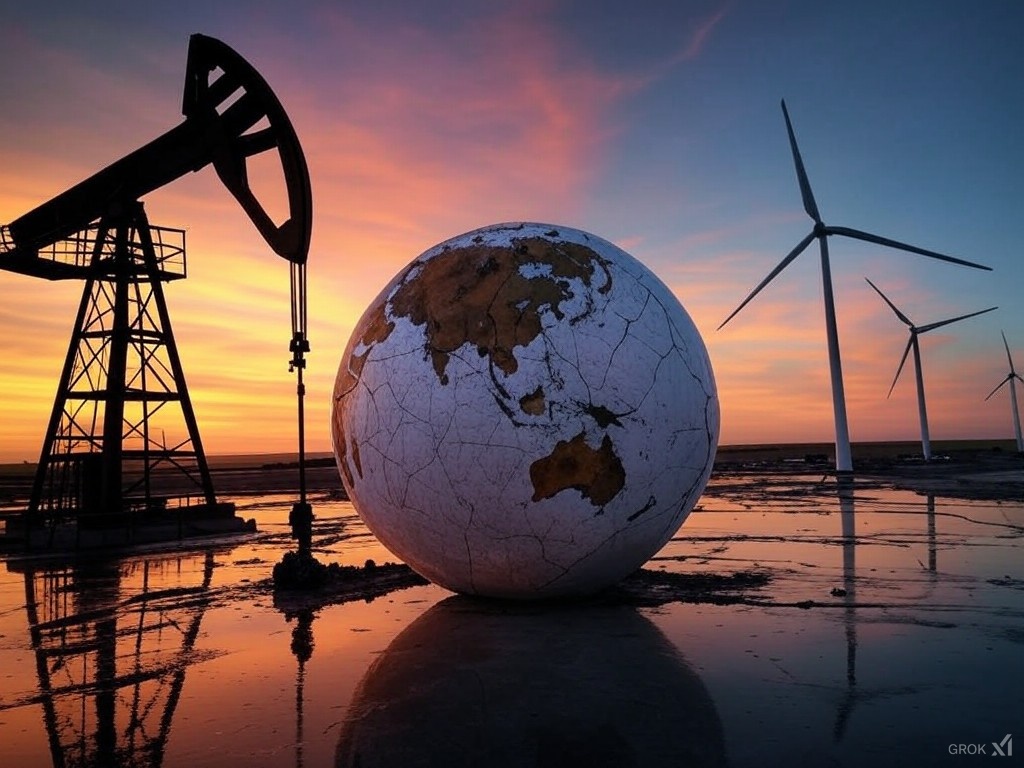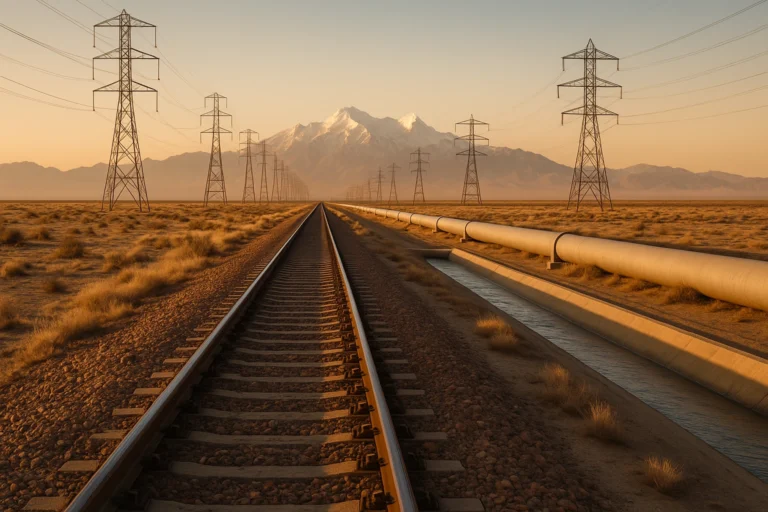
A Clash of Visions for Energy Security and Sustainability
What happens when the world’s largest oil producer ramps up production while the world’s largest oil importer signals a plateau in demand? This question frames the unfolding drama between the United States and China, as they chart starkly different energy strategies. While China prioritizes green energy to reduce its dependence on imported oil, the United States under Donald Trump’s renewed presidency is doubling down on fossil fuels, creating a volatile energy market ripe with opportunities and risks.
The Driving Forces Behind China’s Green Shift
China’s shift to renewable energy isn’t solely about combating climate change. Instead, it reflects a strategic move to reduce reliance on oil imports, a vulnerability for the world’s second-largest economy. For decades, China’s oil demand has been a global growth engine, accounting for half of all world oil demand increases over the past 30 years. However, a combination of slowing economic growth and a burgeoning adoption of electric vehicles (EVs) now suggests that China’s appetite for oil is peaking.
This “green pivot” also positions China as a leader in renewable technologies, from solar panels to EV batteries, cementing its dominance in the global clean energy supply chain. Major Chinese firms, such as BYD and CATL, have accelerated this transformation by investing in cutting-edge battery technologies and expanding production capacities, capitalizing on a global shift towards sustainability.
Trump’s Oil Strategy: Reviving Fossil Fuel Dominance
In stark contrast, the Trump administration is steering the U.S. towards increased fossil fuel production, citing energy independence and economic growth. Under his “drill, baby, drill” philosophy, Trump plans to boost daily oil-equivalent production by 3 million barrels by 2028, as projected by Treasury Secretary pick Scott Bessent.
However, U.S. producers face economic constraints despite the president’s ambitions. With benchmark oil prices hovering around $75 per barrel, many companies are hesitant to invest in new drilling operations unless prices rise closer to $89 per barrel, a level required to justify significant production increases. Even as U.S. oil production hits record levels of 13 million barrels per day, achieving further growth may prove elusive.
Geopolitical Maneuvers and Oil Market Impacts
Geopolitics adds another layer of complexity. The outgoing Biden administration imposed fresh sanctions on Russian oil, potentially removing up to 2 million barrels per day from global markets. Similarly, anticipated restrictions on Iranian exports could further tighten supply. This creates an opening for Saudi Arabia, a key player in OPEC, to adjust production levels and influence prices.
Saudi Aramco, the world’s most profitable oil company, stands poised to benefit from any supply shortfalls. If Trump’s policies stimulate global demand without significantly boosting U.S. production, the kingdom could seize the opportunity to fill the gap, consolidating its role as the market’s swing producer.
Political and Economic Implications
Political Landscape
Trump’s fossil fuel agenda underscores a broader rejection of global climate accords and environmental regulation. While this strategy may placate domestic industries and voters wary of green energy costs, it risks alienating allies who prioritize climate action. For China, this divergence could reinforce its leadership in global climate diplomacy, giving Beijing an edge in soft power dynamics.
Economic Ramifications
Economically, the stakes are high for oil companies, renewable energy firms, and consumers alike. U.S. oil giants like ExxonMobil and Chevron stand to gain from relaxed regulations but may face international backlash in markets increasingly focused on sustainability. Meanwhile, the rise of green energy in China benefits companies like Tesla, which enjoys robust EV sales in the Chinese market, and domestic competitors like NIO and XPeng, which thrive under government incentives.
A Fork in the Road: The Battle for Energy Leadership
The competing visions of the U.S. and China raise questions about the future of global energy markets and climate action. While China bets on renewable energy dominance, the U.S. risks entrenching itself in a fossil fuel-based economy, potentially missing out on the economic opportunities of a green transition. As the world confronts the existential threat of climate change, the divergence in strategies could determine not only market outcomes but the trajectory of global environmental efforts.
Quick Insights
- China’s Peak Oil Demand: Driven by slowing growth and an EV boom, China’s oil consumption may have reached its apex.
- Trump’s Fossil Fuel Push: Aiming to boost production by 3 million barrels daily by 2028, Trump’s agenda faces economic and logistical hurdles.
- Geopolitical Shifts: Sanctions on Russian and Iranian oil could tighten global supply, benefiting OPEC and Saudi Aramco.
- Economic Winners and Losers: U.S. oil firms gain from deregulation, while Chinese renewable leaders like BYD dominate green energy markets.
- Climate Action at Risk: U.S. policies may undermine global efforts to combat climate change, potentially leaving it on the “wrong side of history.”
What’s Next?
Looking ahead, the interplay of U.S. deregulation, Chinese green leadership, and geopolitical disruptions will define global energy dynamics. If oil prices rise, it may spur short-term drilling but could accelerate the transition to renewables. On the other hand, a prolonged focus on fossil fuels risks deepening divides between nations committed to climate action and those clinging to the status quo.



